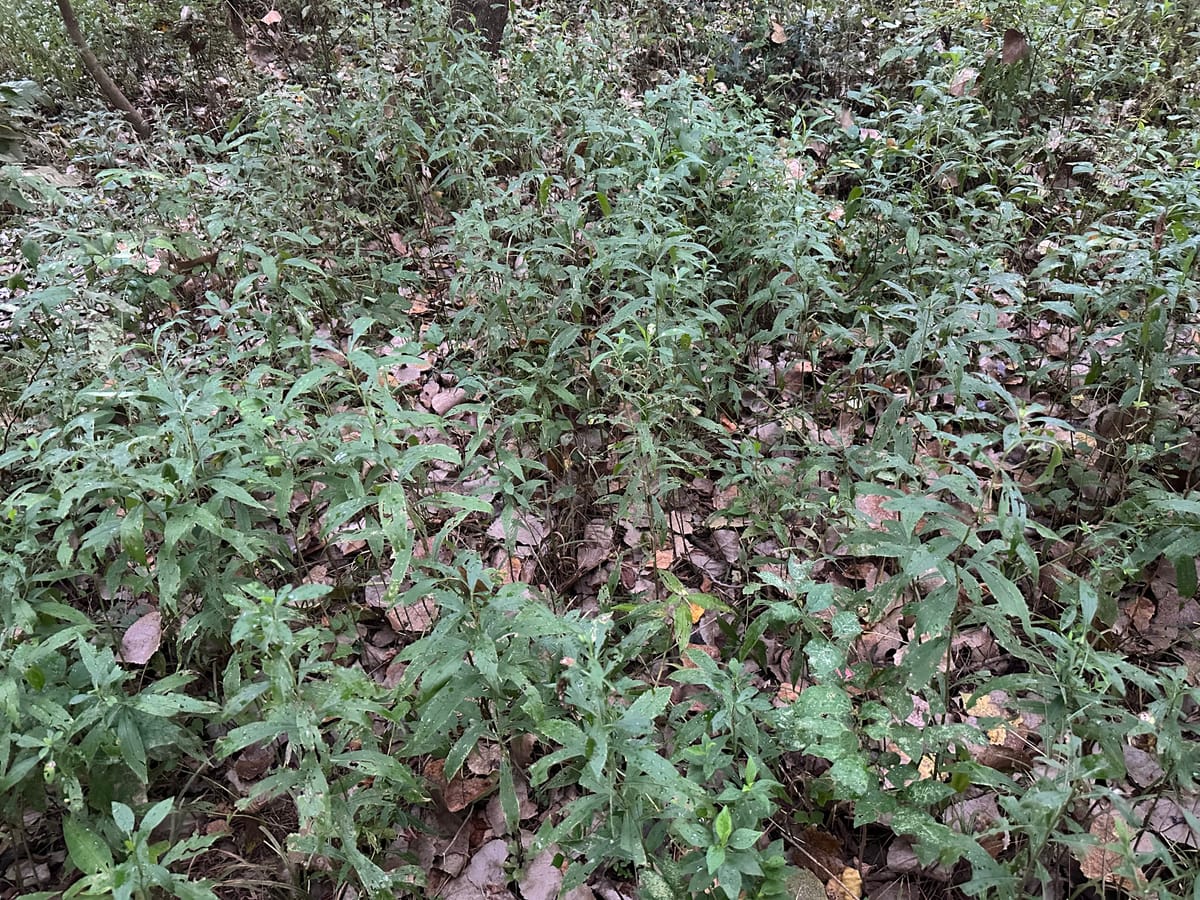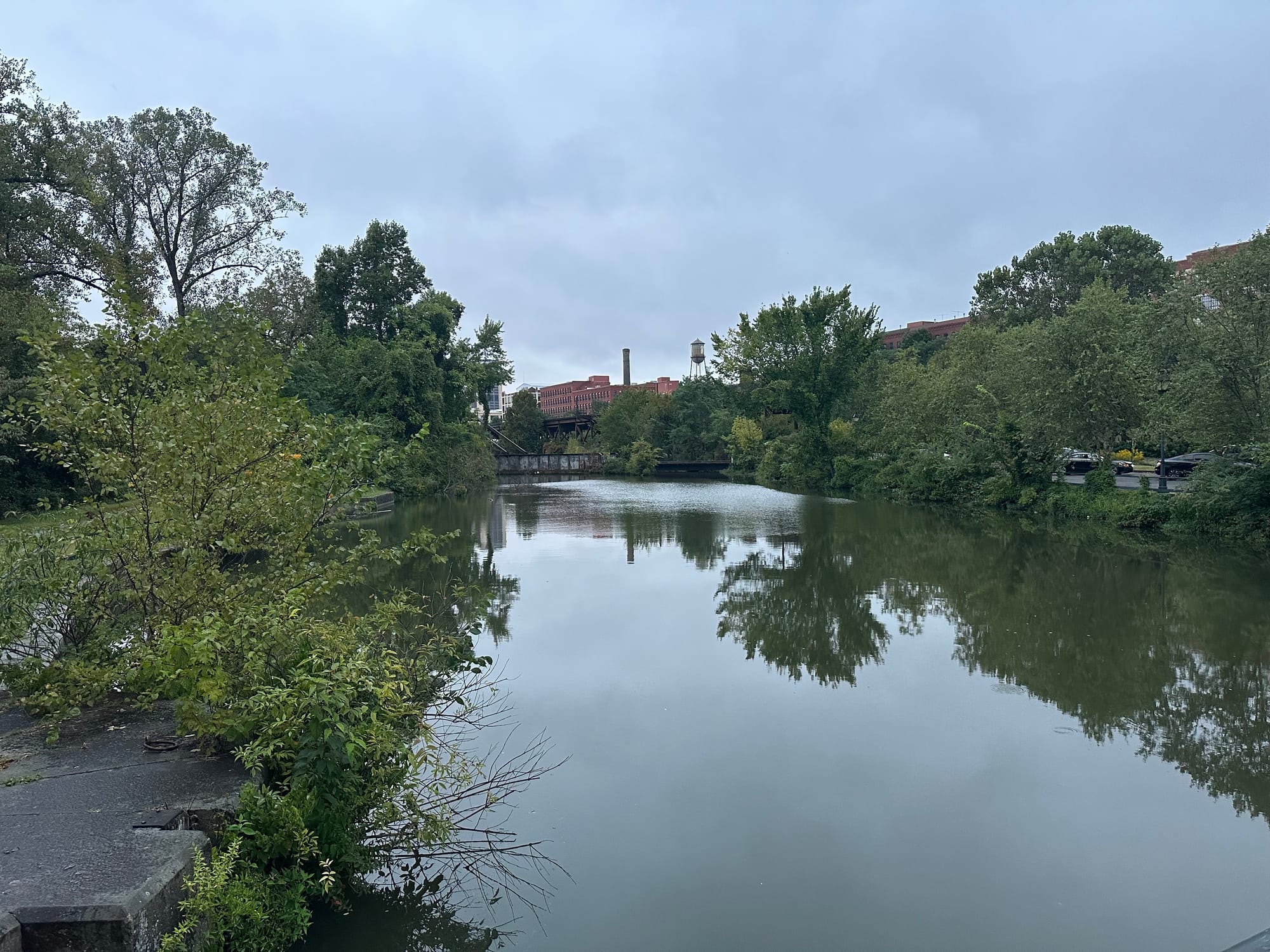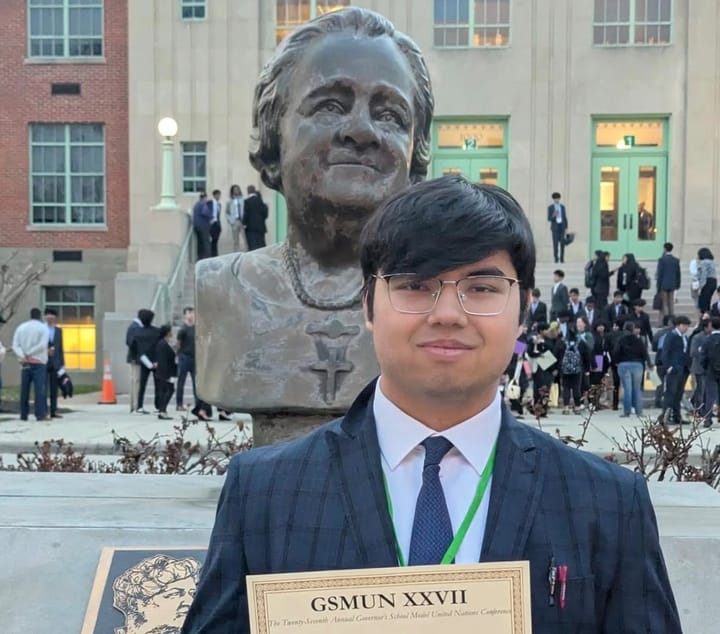
Ecological restoration continues at Chapel Island with invasive plant removal
Volunteers will gather Sept. 19 at Chapel Island for a community-led effort to remove invasive plant species.
Tools and training will be provided on-site during the event, which will take place from 10 a.m. to noon.
The event is part of an ongoing restoration project coordinated by the James River Association. Organizers hope to reduce the spread of aggressive, non-native plant species such as English ivy, Japanese honeysuckle and Chinese privet, which crowd out native vegetation and disrupt the local ecosystem, said Joey Shelton, restoration field manager for the James River Association.

Invasive species typically aren’t affected by the same herbivores, pests or insects as native plants, Shelton said.
“They just consume entire ecosystems, smothering out or killing a lot of the natives," Shelton said.
Chapel Island, located just east of downtown Richmond, was once home to a fish hatchery and dry dock facility. Decades of industrial activity left the soil disturbed and filled with debris, conditions that invasive species thrive in, Shelton said.
To manage the site efficiently, the James River Association divides the island into four quadrants, focusing restoration efforts on one section at a time, Shelton said. This phased approach allows each area to stabilize before moving on.
The restoration team primarily uses mechanical methods such as hand-pulling and pruning, Shelton said. Chemical treatments are used sparingly and avoided during group events for safety reasons.
Shelton said the team relies on natural regeneration, a process which allows native plants already in the soil to reestablish. In some areas, native trees and shrubs are replanted using funds from environmental grants.
Herbicide use and restoration metrics must be reported to the Virginia Department of Agriculture and Consumer Services, including acreage treated and number of plants removed, said Cat McGuigan, invasive species management program coordinator for Friends of the James River Park.
With limited staff and funding, community support is essential to sustaining progress, McGuigan said.
“Volunteers play a really big role,” McGuigan said.
Still, progress is slow, and often discouraging.
“It’ll take several years before you’re really starting to see a decent dent in some things,” McGuigan said. “From season to season, you do start to see the native ecology rebounding, which is kind of exciting.”
The population of invasive plants often starts small until they explode, said Edward Crawford, assistant director of the VCU Rice Rivers Center.
“A species will make its way to the United States and then potentially die out,” Crawford said. “Others will come over, and they’ll start to reproduce, and they’ll have a reproducing population in some part of the country and may not necessarily become an issue. But for some reason, whether it’s an environmental cue or genetic mixing, the population just explodes and becomes problematic.”
While restoring native vegetation is a key part of the process, progress also depends on raising public awareness.
“People just don't really have an idea of the ecological, environmental, economic and public health issues that these organisms can cause,” Crawford said.
Crawford estimates the cost of managing invasive species in the U.S. exceeds $137 billion annually.
While progress is gradual, restoration doesn’t mean perfection, just meaningful improvement, Shelton said.
“We’re not going for a 100% native restoration project. That’s just not feasible,” Shelton said. “But I think areas that are mostly native are going to be what I consider a success.”
The Richmonder is powered by your donations. For just $9.99 a month, you can join the 1,000+ donors who are keeping quality local journalism alive in Richmond.






